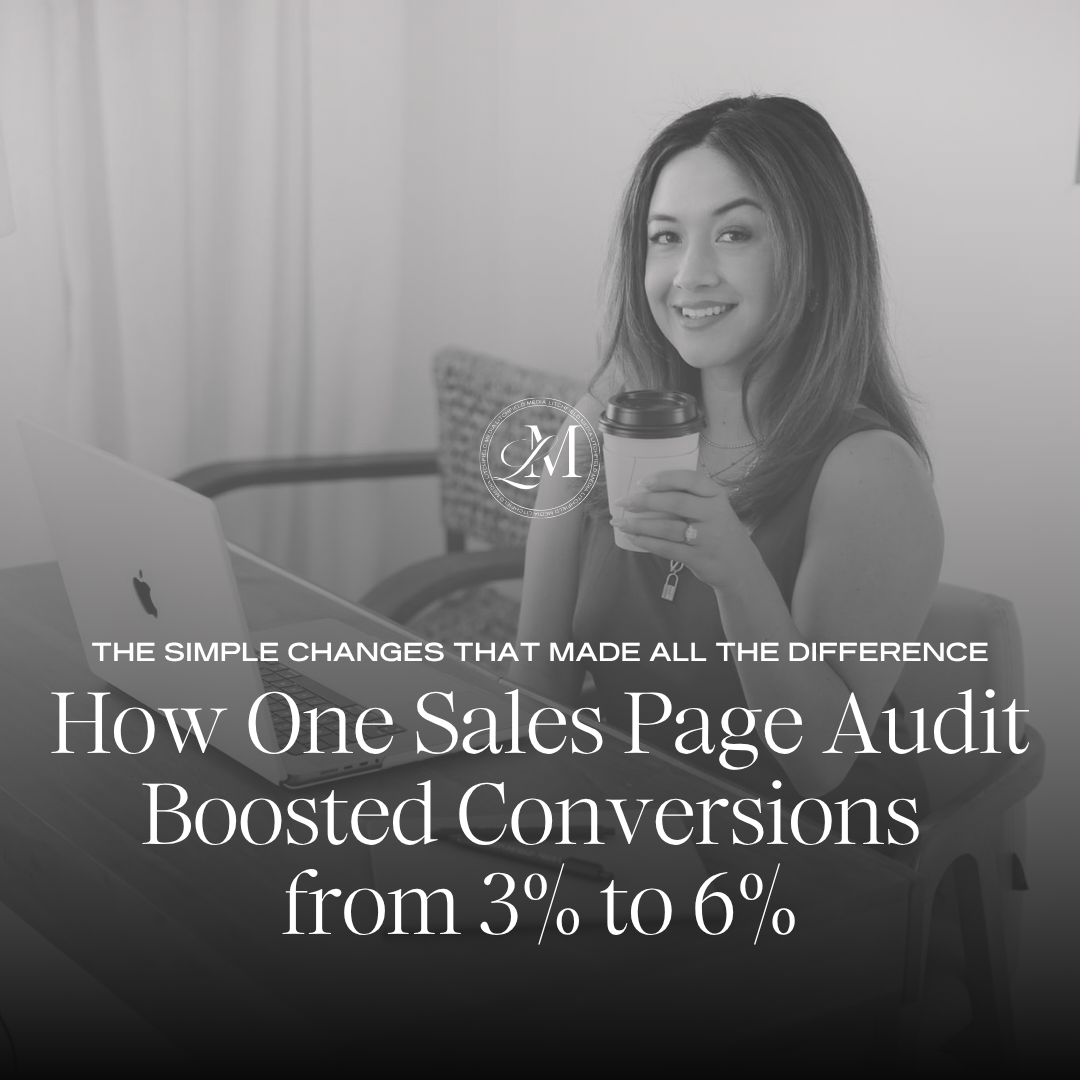I just finished a sales page audit that reminded me exactly why I love this work. Sometimes the smallest changes create the biggest wins – and this case study proves it perfectly.
The Challenge: Great Traffic, Terrible Conversions
My client came to me frustrated. They had a low-ticket digital product priced at $27, were investing over $10,000 in ads monthly, and getting solid traffic. But their sales page was only converting at 3.19%.
For a low-ticket offer, there’s definitely room for improvement there. The good news? When I conduct a thorough sales page audit, small tweaks often make huge differences.
Why Low-Ticket Offers Are Pure Gold
Here’s what I’ve learned about low-ticket products: they have incredible potential because the price point removes most buying objections. When someone can afford your product without thinking twice, you just need to focus on clarity and value.
This particular sales page audit revealed some common issues I see constantly.
Problem #1: Manufactured Urgency Backfires
The page was drowning in urgency tactics – countdown timers, “price doubling soon” messages, and value stacks showing massive savings for a limited time.
Here’s the reality: today’s buyers are savvy. They can spot manufactured urgency from a mile away, and it often makes them pause instead of purchase.
What works better? Authentic social proof combined with natural urgency. Something like “Over 2,300 people have already solved this problem for just $27” hits differently because it’s true and focuses on results rather than artificial scarcity.
Problem #2: Information Overload at the Top
The header section had multiple messages competing for attention and complex value propositions that required mental gymnastics to understand.
During my sales page audit, I always look for this issue first. We simplified everything to answer three crucial questions immediately:
- What is this?
- Why should I want it?
- How do I get it?
Sometimes the most powerful thing you can do is make it ridiculously easy for people to understand what you’re offering.
Problem #3: Unnecessary Checkout Friction
They had a two-step checkout for their $27 product. While multi-step checkouts work in some cases, for low-ticket items, we recommended testing a single-step process to eliminate friction.
We also suggested adding customer testimonials directly on the checkout page. Sometimes people need that final bit of reassurance before they buy.
The Results: Why Sales Page Audits Work
Here’s what excites me about optimizing low-ticket offers: small improvements create massive impact because you’re removing barriers rather than creating desire from scratch.
At $27, most people already want what you’re selling if they clicked your ad. Your job is simply making it crystal clear what they’re getting and how it helps them.
The conversion rate we’re targeting? 5-6%. When you focus on clarity over complexity, low-ticket offers become incredibly effective.
Your Action Plan: 5 Sales Page Audit Essentials
If you’re running ads to a low-ticket offer, here are the areas that typically deliver the biggest wins:
- Focus on clear benefits over manufactured urgency – Real social proof beats fake scarcity every time
- Simplify your main messaging – Answer the three key questions upfront
- Test a streamlined checkout process – Remove unnecessary steps
- Add testimonials specific to that exact product – Generic reviews don’t convert
- Remember that clarity beats complexity – Always choose simple over clever
The Bottom Line
Your offer doesn’t need to be perfect to start converting better. This sales page audit proved that sometimes the smallest tweaks make the biggest difference.
Ready to see what a professional sales page audit could do for your conversions?
